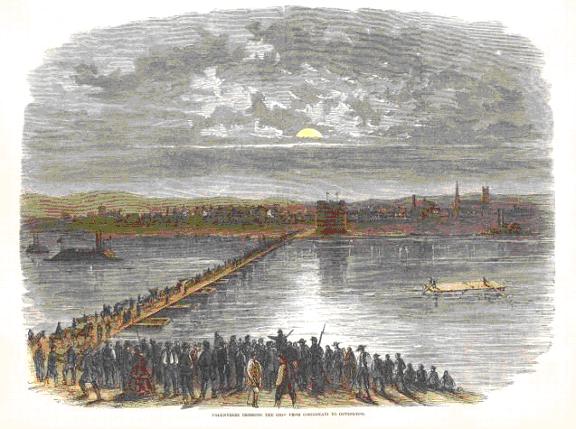History
History of Battery Hooper
Battery Hooper, one of the few remaining Civil War defensive positions left in Northern Kentucky and Cincinnati, represents a time when the community came together in a crisis. In September of 1862 -- 142 years ago this September --men, women, and children worked together to erect an eight-mile defensive line from Ludlow to Fort Thomas to defend against the Confederate invasion of Kentucky. Men dug rifle pits, erected forts, and cut trees for a field of fire using the limbs as barriers against infantry. The men of the Black Brigade of Cincinnati were so proud they published a book about their work. Women cooked meals, and boys and girls delivered the baskets and brought water to the men.
The work resulted in a great victory-- 8,000 Confederate soldiers marched to Fort Mitchel ( known locally as Fort Mitchell today ), observed for two days, and decided that the defenses, manned by 22,000 Union troops and 50,000 militia, were too strong. The Confederate invaders withdrew in the night.
During the emergency, the first bridge was erected across the Ohio River connecting Cincinnati, OH and Covington, KY. It was a military pontoon bridge for moving men and supplies into northern Kentucky. At one point, after the defenses were constructed and before Confederate troops arrived, military authorities opened the pontoon bridge to civilians. Boys and girls enjoyed the novelty of walking and riding their horses back and forth on the pontoon bridge.
Battery Hooper was an artillery position with two large siege cannons that could fire 18-pound shells. It was named in honor of William Hooper, a prominent banker in Cincinnati who donated money to help pay the men working on the defenses. The battery was one of 27 defensive works that included Fort Wright and Fort Mitchell. From this hilltop, the soldiers could see batteries on other hills to the right and to the left across the Licking River in Campbell County.
Fern and Sheldon Storer preserved the site by covering it with dirt for their lawn, and in her will, Fern gave the land to the Northern Kentucky University Foundation. The City of Fort Wright purchased the 14 acres from the NKU Foundation for a park, and the community is working together again to restore the battery and recently dedicated the James A. Ramage Civil War Museum which was built on the first floor of the Storer house. The original project was funded with a grant from the University/Community Partnership Program of Northern Kentucky University.
